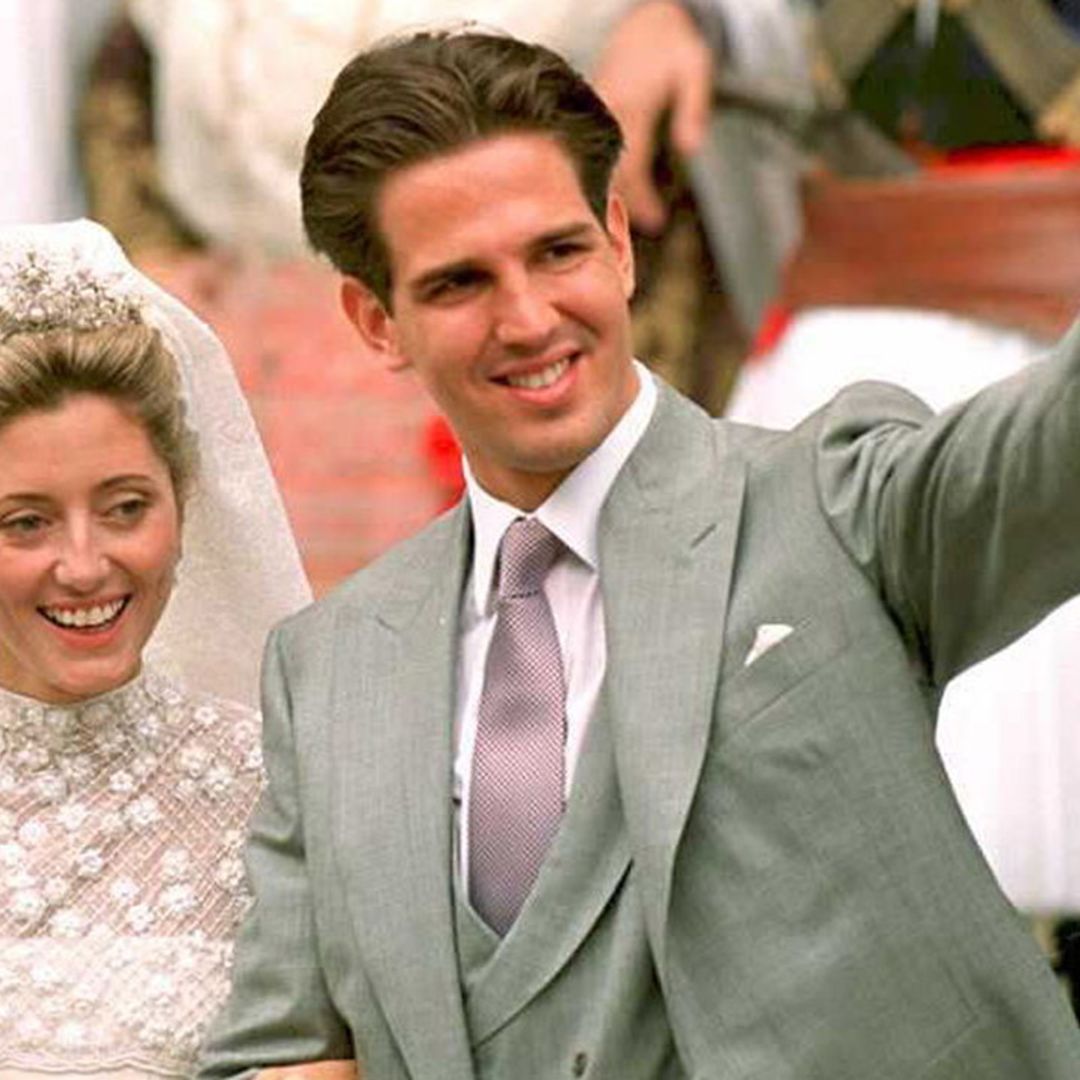Princess Chantal d'Orléans, the youngest daughter of the Count and Countess of Paris, embarked on a journey of love and commitment when she married Francesco-Xavier de Sambucy de Sorgue in 1972. The couple's union was marked by a grand ceremony at the Royal Chapel in Dreux, attended by family and friends.
On July 28, 1972, Princess Chantal donned a stunning wedding gown designed by renowned couturier Balmain, accompanied by a diadem gifted by her in-laws. This golden wedding, a testament to the enduring love and commitment of the couple, has become a cherished memory in the annals of European royal history.
what were the key highlights of Princess Chantal's wedding day

- The Ceremony: Princess Chantal married François-Xavier de Sambucy de Sorgue at the Royal Chapel in Dreux on July 28, 1972.
- The Wedding Gown: She wore a stunning wedding gown designed by renowned couturier Balmain.
- The Diadem: She wore a diadem gifted by her in-laws, which added to her regal appearance.
- The Family Connection: The Sambucy de Sorgues had a historical connection with the Orléans family, with François-Xavier's great-uncle, Father Gaston de Sambucy de Sorgue, officiating the burial ceremony of the Duchess d'Orléans, King Louis-Philippe's mother.
what was the significance of the Royal Chapel at Dreux for Princess Chantal's wedding

what historical events have taken place at the Royal Chapel at Dreux
- Transfer of Coffins: In 1783, the Duke of Penthièvre transferred the coffins of his parents, his wife, and six of their seven children from the medieval village church in Rambouillet to the chapel of the Collégiale Saint-Étienne de Dreux.
- French Revolution: In November 1793, during the French Revolution, a mob desecrated the crypt and threw the ten bodies into a mass grave in the Chanoines cemetery of the Collégiale Saint-Étienne.
- Construction and Enlargement: In 1816, the Duchess of Orléans had a new chapel built on the site of the mass grave, and in 1830, Louis Philippe I, King of France, enlarged and embellished the chapel, renaming it the Royal Chapel of Dreux.
- Burials: The chapel has been the burial site for many members of the House of Orléans, including Louis Philippe I, the last king of France, and his family.
 |
| Princess Chantal on her wedding day with her parents, the Count and Countess of Paris. |
In 1971, Princess Chantal d'Orléans (b.1946), the youngest daughter of the Count and Countess of Paris, became engaged to François-Xavier de Sambucy de Sorgue (b.1943), a member of a noble family originally from Bologna, Italy. The Sambucy de Sorgues established themselves in Rouergue in the XIV century. The family also had contact with the Orléans as François-Xavier's great-uncle, Father Gaston de Sambucy de Sorgue, was the priest who officiated over the burial ceremony, in the Royal Chapel at St Louis de Dreux, for the Duchess d'Orléans, King Louis-Philippe's mother. François-Xavier and Chantal were married at the Royal Chapel at Dreux on 28 July 1972. She wore a splendid wedding gown designed by renowned couturier Balmain, as well as a diadem by Mellerio, a gift from her in-laws.
As we conclude our exploration of the Golden Wedding of Princess Chantal d'Orléans and François-Xavier de Sambucy de Sorgue, we are reminded of the enduring power of love and commitment. The couple's union, marked by a grand ceremony at the Royal Chapel in Dreux, France, on July 28, 1972, has become a cherished memory in the annals of European royal history. The Golden Wedding serves as a testament to the enduring legacy of the royal family, as well as the strong bonds forged between the families involved.
As we reflect on the significance of this event, we are struck by the intricate web of connections that binds the royal families of Europe. The Sambucy de Sorgues, originally from Bologna, Italy, established themselves in Rouergue in the XIV century and had contact with the Orléans through François-Xavier's great-uncle, Father Gaston de Sambucy de Sorgue, who officiated over the burial ceremony for the Duchess d'Orléans, King Louis-Philippe's mother. This family connection underscores the importance of preserving the historical context in which these events took place. The Golden Wedding of Princess Chantal and François-Xavier serves as a poignant reminder of the enduring power of love and commitment, transcending the boundaries of time and family ties.
what other significant events have occurred at the Royal Chapel at Dreux
- Burials: The chapel has been the final resting place for many members of the Orleans family, including Louis-Philippe, the last king of France, and his wife, Princess Maria Amalia of the Two Sicilies.
- Construction and Enlargement: The chapel was built in 1816 by the Duchess of Orleans, widow of Philippe-Egalité, and was later enlarged under Louis-Philippe, who embellished and renamed it the Royal Chapel of Dreux.
- Transfer of Coffins: In 1775, Louis Jean Marie de Bourbon, Duke of Penthièvre, transferred the coffins of his parents and six of his seven children from the medieval village church next to the castle in Rambouillet to the chapel of the Collégiale Saint-Étienne de Dreux.
- Desecration and Mass Grave: In 1793, during the French Revolution, a mob desecrated the crypt and threw the ten bodies into a mass grave in the Chanoines cemetery of the Collégiale Saint-Étienne.
- Historic Designation: In 1977, the domain of the chapel was designated by the French government as a partially protected monument historique (national heritage site).




No comments:
Post a Comment